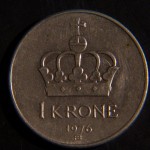Copper swung between gains and losses on Tuesday as investors weighed a partial shutdown of the U.S. government against data which showed expansion in the manufacturing sectors of China, Great Britain and the Euro zone.
On the Comex division of the New York Mercantile Exchange, copper futures for delivery in December fell to a new session low of $3.314 per pound at 8:57 GMT, down 0.28% on the day. Days high stood at $3.337 per pound. The industrial metal remained fairly unchanged on Monday and extended its weekly decline to 0.2% on Tuesday.
Copper was initially pressured during most of the Asian session after the first U.S. government shutdown in 17 years threatened to impair the recovery of the world’s biggest economy. Lawmakers failed to pass a budget for the 2014 fiscal year, which could potentially put nearly 1 million state employees on unpaid leave with were no further negotiations planned yet. This could cut the U.S. fourth-quarter economic growth by as much as 1.4% due to the lost output from furloughed workers, while essential operations and dedicated funded programs will continue.
Meanwhile, both parties still disagree over raising the nation’s debt limit, which would render the U.S. Treasury Department unable to borrow around October 17. According to the Congressional Budget Office, the U.S. won’t have enough money to pay all of its bills at some point between October 22 and October 31. Moody’s Investors Service warned that a failure to raise the debt ceiling would have a much worse impact on the financial markets than a government shutdown.
A government report showed that Chinas manufacturing sector expanded less than expected in September, indicating fragile growth. The Asian countrys official manufacturing PMI slightly increased to 51.1 in September from 51.0 in August, underperforming analysts expectations for a surge to 51.5.
Yesterday, a private survey showed that the HSBC Purchasing Managers’ Index remained broadly unchanged from August’s 50.1 but underperformed both the preliminary reading and analysts’ expectations for a surge to 51.2. Nevertheless, this still marked an improvement after July’s 11-month low.
Meanwhile in Europe, Spains manufacturing PMI failed to meet expectations but remained in the expansion zone at 50.7, followed by Italy with a decline to 50.8 from 51.3 in August. Frances manufacturing activity marked an improvement but was still below the neutral level at 49.8, despite beating projections for a 49.5 reading. Germanys manufacturing PMI was anticipated to retreat to 51.3 from 51.8 in August but mismatched projections and fell to 51.1, still marking an expansion in the sector however.
The overall Euro zone manufacturing activity also rose in September but trailed Augusts pace. The single currency blocs manufacturing sector expanded for a third consecutive month and posted 51.1 in September following Augusts 26-month high of 51.4. At 51.1, the seasonally adjusted Markit Eurozone Manufacturing PMI recorded a quarterly growth which put an end to the sectors long running recession and signaled a modest rate of expansion. Recovery remained broad-based, with output rising in all nations except France and Greece.
Chris Williamson, Chief Economist at Markit commented: “An improvement in eurozone manufacturing business conditions for a third straight month in September sends a reassuring signal that the sector is providing an all-important lift for a region that has been besieged by recession. Even manufacturers in the regions “periphery‟ are reporting better demand for their goods. Orders rose for the fourth month running in Spain and for the third successive month in Italy and Ireland. In the region‟s „core‟, orders likewise rose for a third month running in Germany and the Netherlands and even the recent laggard France saw the first upturn in demand for just over two years. This is good news for the eurozone but also for the global economy.”
A separate report showed that manufacturing activity in the U.K. was close to Augusts two-and-a-half year high. The Markit/CIPS Purchasing Manager’s Index remained in the expansion zone for a sixth month in a row at 56.7 in September, slightly underperforming the preceding months 57.2 and expectations for a surge to 57.5. The rate of job creation climbed to a 28-month peak.
David Noble, Chief Executive Officer at the Chartered Institute of Purchasing & Supply, commented on the report: “The manufacturing sector maintained its stellar performance this month, building on last month’s 2-and-a-half-year high to round off the best quarter of growth since Q1 2011. Employment levels soared in September, rising at the sharpest pace since May 2011 completing a positive outlook for the rest of the year.”
Market players also awaited the ISM Manufacturing index due at 14:00 GMT, which will likely show that the expansion of the U.S. manufacturing sector inched down in September.





